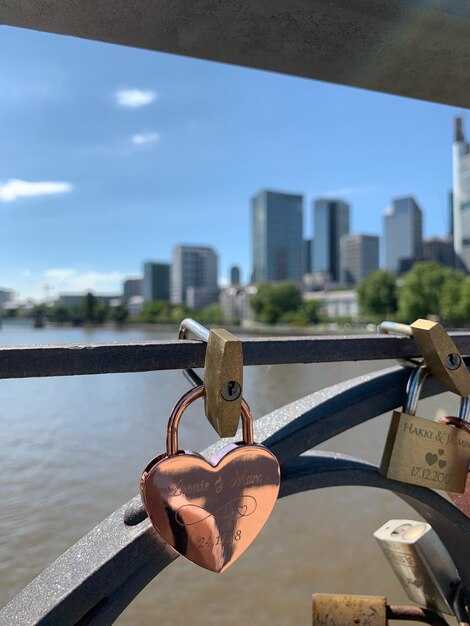Recommendation: Build one tight, honest profile for ages 50+ and commit to five targeted messages per week. This approach sits at the core of the Burned Haystack Dating Method I tested, turning scattered effort into clear signals. After two weeks I stopped the random swipes and started counting responses, which gave me a reality check and momentum the same week.
In the first month I logged 28 activity items, 12 replies, and two coffees scheduled with people who showed genuine alignment. The key was keeping conversations towards concrete plans: coffee dates, video chats, or a second meetup within seven days. I used a simple rubric to determine fit: shared values, clear communication, and willingness to meet in person. That focus reduced time waste and boosted satisfaction around the pool of matches.
We started by assessing what I truly wanted, including companionship and shared activities around travel and dinners. Then I crafted a bio that answered honestly what I bring to a relationship and what I expect. I determined three anchors: reliability, conversational ease, and openness to new experiences. Clarity produced more frequent replies and fewer dead ends.
Behind the scenes I mapped issues that slowed progress: lengthy bios, vague prompts, and invites to meet without mutual interest. I set a timer for messages–about 30 minutes a day–and ensured my replies moved toward concrete next steps, like coffee or a video chat within a week. This tweak cut aimless scrolling and improved the quality of matches around 40%.
For others who try this, a coach can help determine your core criteria and keep you accountable. I kept the activity steady and on track, and I share tips that keep you from burning out: create a three-sentence bio, list non-negotiables, and use a simple message template with a specific follow-up question. Sure, we and our approach can evolve as you learn what works for you, and dont rely on luck–evaluate responses honestly and adjust for ourselves.
heres the plan to begin today: craft a crisp bio, log five targeted messages per week, track replies, and refine your bio after each week. This keeps activity focused and moves you toward real meetings rather than endless chats. Adjustments come every couple of weeks as you collect data on what prompts the best replies and what topics feel natural to discuss.
Practical steps to rewrite your dating story in your 50s
Rewrite your dating profile to reflect your 50s priorities and personal boundaries. This becomes your first script for how you show up online. Use a short story that explains what you want and what you won’t tolerate, and apply it as a guide for every message and date. Include 4-6 photos that reveal real life, hobbies, and routines, not just staged scenes. Make your profile concise and honest, enough to attract someone who shares your values. After burned haystack attempts, this profile becomes your anchor, steering you toward more compatible conversations. Let this scene reflect your calm, confident self.
Identify past patterns that led to burnout and overcome them with intentional choices. If you found toxicity in early chats, stop conversations that drain you. Selectively engage with quelqu'un who shows respect, shared interests, and clear communication. Acknowledge the problems you faced and explain how you handle them differently now to avoid repeating mistakes. You wouldnt tolerate gaslighting or vague plans; absolutely set boundaries and stick to them.
Study successful profiles and map out conseils that match your voice. Look at five profiles that drew you in and five that didn’t, then distill actionable takeaways. Use those conseils to craft your opening messages, keeping them short, specific, and inviting. Track likes, reach, response rate, and time-to-reply to refine your approach; aim for meaningful exchanges rather than long chatting sessions.
Set a cap on chatting sessions to keep energy high; aim for 2-3 meaningful exchanges per day before proposing a quick call or in-person meet. Keep conversations personal but avoid oversharing. If the other person doesn’t match your pace within 24-48 hours, move on to someone else.
Choose first dates that are short and safe: coffee, a short walk in a public place; plan a meet in a neutral venue; tell a friend your plan; keep your own transport option; have an exit plan. If you schedule a date in a different neighborhood, plan a short trip to a public place. This approach helps you test compatibility without overcommitting.
Measure progress weekly; note what works: who responds warmly, who doesn’t, and how your mood shifts after chats. Already you will notice improvement in confidence when you see more positive interactions than negative ones.
Define your core dating goals and non-negotiables
List three core dating goals and two non-negotiables today, and use them as a filter for every profile you consider. This shifts you from aimless scrolling to purposeful looking and definitely reduces fatigue.
While sitting with a notebook, single and working, you face a flood of messages. Decide what you want from a connection: companionship, partnership, or a long-term plan, and put those targets into your goals.
Facing the noise, apply a tight filter. If a profile isnt aligned with your non-negotiables, remove it immediately and move on. Your time matters.
Three points define your filter: values alignment, consistent communication, and practical fit (location, schedule, and energy level). Use these as gatekeepers at every step to decide between casual dating and a long-term relationship.
To apply, answer these questions and remove any profile that fails: Are we aligned on core values? Do they respond within 24 hours? Do our life goals fit together? If somebody shows promise, note the response and keep going. These questions keep you focused and prevent wasted chats.
Keep an email note for each decision. Track why a profile was qualified or rejected, and use that history to refine your criteria. Letting the notes pile up helps you see related patterns across multiple conversations.
padison prompts can help surface intent quickly: ask open questions like, “What does a typical week look like?” and “Are you looking for something casual or long-term?” theres value in testing alignment with minimal back-and-forth, and you can compare results without bias. If you get a quick positive response from somebody, plan the next step and move toward a real conversation.
Next steps: until you meet somebody who clearly hits all non-negotiables, stay narrow and purposeful. Shift from chasing every ping to pursuing real compatibility rather than more bars or more matches. Treat dating as several small businesses: invest energy where the leads pass the filter, and prune the rest.
| Core dating goal | Non-negotiable | Filter status |
|---|---|---|
| Build a meaningful connection | Mutual respect and honest communication | Qualified |
| Meet in person within two weeks of starting conversations | Clear responsiveness and pace | Qualified |
| Align on life goals and weekly rhythm | Shared long-term direction | Not qualified |
Decipher the Burned Haystack Method: what to apply and what to skip
Start with a concrete rule: target 6-8 new online matches weekly and commit to 3 quality exchanges. Craft each opener around a profile detail and skip generic greetings. This focus helps you reach better connections without drowning in matches. theres no magic, you still need a plan and measurement to verify what works.
To apply the method, define filters: distance within 25 miles, age 50-65, certain interests like travel, dogs, volunteering. Update your photos to show life: one friendly portrait, one in activity, one with friends. Write a short bio that signals romantic intent and practical values. Your initial message should reference a detail from their profile and ask a single question, around 25-32 words, to invite a reply. Attention to tone boosts response rate; youve got to test and iterate. Even better results come from concise, curious lines.
Keep the process tight: keeping a log of each interaction, determine what works, and adjust weekly. If a thread stalls, break line and pivot to a new angle. Reach out selectively to someone who shows consistent life signals rather than chasing every profile. Avoid online bars of generic lines; choose quality over quantity. Both sides benefit from clear boundaries and mutual respect. You might notice some profiles respond better to a question that invites sharing a personal moment.
Skip cold, generic lines like “hi” or “how are you.” Skip chasing every match; were aiming for alignment, not volume. Don’t overshare right away; keep the first two messages under 90 words. If a girl turns out not to be a match, shift attention to another someone and keep it classy. Saying less at first yields more genuine replies and saves time.
lets keep it practical with a professor’s checklist: run 14 days, log answered messages, and determine which openings move conversations forward. Around shifting preferences, test two angles per week and keep the best. If you bring a romantic, life-focused tone and stay around your core values, you might connect with someone who shares them. Some say the method is slow; saying this aloud helps set expectations and keeps you on track.
Audit your profiles: prune noise, highlight authenticity
Do a 15-minute audit of your bio and photos. Each line should matter. Remove noise and clichés; replace them with specifics. The algorithm suggests that clear signals beat generic promises. Write in a natural voice, and make every sentence earn its place. Mention your interest and the area of life you want to share with a partner; this makes you solid and helps you meet someone who shares values. This matters in your half-century dating scene and reduces waste.
-
Prune the bio and headline to a solid snapshot. Cut long lists of vague traits; replace with concrete examples: what you do, what you enjoy, and how you spend your weekends. Show your values through a short story or a concrete outcome. Even a compact line like “I’m looking for a steady, respectful relationship built on humor” sets a clear expectation. This keeps the focus on being authentic rather than chasing every possible match.
-
Curate photos and setting: choose four images that together tell a real story. A solid main headshot in natural light, a candid in a real setting (not a studio pose), a photo that shows you pursuing a hobby, and one that reflects daily life. The photos shown should be recent and high-quality; avoid heavy filters. This approach minimizes waste and helps a partner meet the real you. The setting and scene matter because they reveal lifestyle and personality.
-
Clarify marital status and intent. Be explicit about what you want and whether you’re open to a long-term commitment. A partner who meets your standards appreciates honesty. Instead of vague statements, share what you value in a relationship, what you’re ready to give, and what kind of setting you envision. This approach honors both your time and theirs, reducing worry and preventing mismatches.
-
Craft initial messages with care. Reference a specific detail from their profile to show you read it and are genuinely curious. Use a natural, friendly tone; avoid scripts or product-like pitches. A thoughtful opener makes the other person feel seen and increases the chance of a meaningful conversation. Remember: you can nod to shared interest without oversharing, and always aim to be helpful rather than pushy, so someone feels encouraged to respond.
-
Study your results and adjust filters. Track which messages lead to conversations and which profiles actually respond. Use the app filters to refine distance, age, and lifestyle requirements; this helps every next attempt. If you notice patterns that felt waste, tweak your bio, photos, or questions. Even when results are slow, this approach stays honest, making it easier to find a partner who meets your standards.
Craft messages that spark a real conversation, not tricks
Begin with one personal, profile-based question that invites a story rather than a yes-or-no answer. For example: “I see you volunteer at a shelter–what’s a moment with an animal that still lights you up?” This signals genuine curiosity and gives others a chance to share a personal experience, not a canned opener.
Determine the tone by choosing a detail from their lives and framing a question around it. A message with that focus delivers perspectives and builds confidence, giving you a stronger start. Keep it concise, giving a glimpse of your year and values toward a potential connection.
A survey of daters shows that messages that reference a specific detail yield higher responses. Always avoid generic lines; absolutely tailor your note to something you gleaned from their profile. Share a little about yourself, a personal hobby or a recent experience, to spark attraction.
Donnez une intention claire : à qui vous espérez vous connecter, ce que vous ценно, et comment vous voulez que la conversation se déroule. Quand ils réponse ou répondez, répondez rapidement; parfois une réponse rapide et réfléchie est plus utile qu'un long fil de discussion. Si une ligne est répondu, décidez s'il faut continuer la conversation ou passer gracieusement à autre chose.
Abordez les problèmes ouvertement : ne prétendez pas à la perfection. Parfois un syndrome d'amertume peut s'insinuer lorsque les réponses tardent ; abordez-le avec curiosité. Ce n'est pas entièrement une question d'astuces, ceci entier l'approche maintient l'attention sur lives vous partagez et vers le mutuel attraction plutôt que de la manipulation.
Gardez toujours la conversation humaine et personal, donnant perspectives dans qui vous êtes et ce que vous voulez explorer. Dehors les pressions doivent rester en dehors de la conversation ; concentrez-vous sur une découverte authentique plutôt que sur des répliques intelligentes. Si vous décidez de pivoter, faites-le avec élégance et laissez la porte ouverte à une future connexion vers un véritable lien.
Adoptez un rythme mesuré : quand passer des applications à un vrai rendez-vous
Passez à une vraie rencontre après 4 à 7 jours d'interactions régulières et significatives ; un café ou une courte promenade sont les meilleures options. Ce rythme réduit l'épuisement dû à des stimuli incessants et maintient l'élan, empêchant le processus de perdre sa direction. Si vous avez eu trois ou quatre échanges de qualité et que l'ambiance est chaleureuse, c'est le signal pour proposer une rencontre.
Choisissez une date qui minimise la pression : une sortie de 45 minutes dans un lieu public sûr suffit pour savoir si vous vous entendez bien. Établissez un plan concret et précisez où vous vous rencontrerez et qui vous verrez. Si la réponse est enthousiaste et que vous entamez un échange sur des sujets que vous appréciez tous les deux, cela indique une plus grande compatibilité. Si quelqu’un dit qu’il est nerveux à l’idée de se rencontrer, ce sentiment peut encourager un plan rapide et sans pression : juste une courte session dans un endroit familier. Recherchez les signaux indiquant que l’ambiance est mutuelle : les réponses arrivent dans la journée, les questions continuent d’affluer et vous recherchez un terrain d’entente, pas des discussions superficielles. Si vous avez un voyage prévu plus tard dans le mois, coordonnez le timing pour éviter la pression et maintenir une dynamique saine.
Comment faire une proposition : proposez deux créneaux horaires dans les 7 à 10 prochains jours, et faites simple : passez de la plateforme à un vrai rendez-vous. Gardez le plan concret : « café à [lieu] vendredi à 18h ou samedi à 11h ». Cette approche vous aide à gérer la logistique sans trop vous éterniser. Si vous avez des tatouages ou un style distinctif, mentionnez-le avec désinvolture comme un sujet de conversation potentiel – c’est un stimuli naturel qui peut détendre l’atmosphère. Parfois, un simple détail comme un intérêt commun pour la randonnée ou une cuisine préférée peut devenir la base d’un plan romantique qui semble sans effort.
Lors du rendez-vous, maintenez une ambiance détendue : s'asseoir l'un en face de l'autre aide à calmer les nerfs. Écoutez plus que vous ne parlez et maintenez un contact visuel approprié. Ne dépassez les limites de personne et, si l'alchimie n'est pas au rendez-vous, vous pouvez mettre fin poliment et revoir ce que vous avez appris plus tard. L'objectif est de réduire l'épuisement professionnel, pas de forcer une correspondance. Si un deuxième rendez-vous semble probable, vous avez la preuve d'une vraie connexion ; sinon, vous pouvez passer à autre chose et éviter de perdre du temps avec quelqu'un qui ne vous convient pas. Rétrospectivement, la cohérence est le meilleur prédicteur : dire que vous êtes prêt à réessayer et adopter un rythme réaliste sont des facteurs qui améliorent les résultats. Rappelez-vous toujours : les rendez-vous sont une affaire de deux personnes, pas une performance solo, sous le même soleil que les autres.

 Applications de rencontre dans la cinquantaine - Comment la méthode de rencontre de la meule de foin brûlée a mis fin à ma frustration">
Applications de rencontre dans la cinquantaine - Comment la méthode de rencontre de la meule de foin brûlée a mis fin à ma frustration">


 Stratégies de guérison du ressentiment">
Stratégies de guérison du ressentiment">
 Love in the Concrete Jungle – NYC Dating and Relationships Guide">
Love in the Concrete Jungle – NYC Dating and Relationships Guide">
 Signes qu'une femme est sexuellement attirée par vous – 10 indices clairs">
Signes qu'une femme est sexuellement attirée par vous – 10 indices clairs">